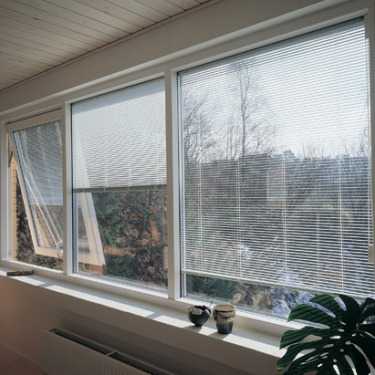 The international energy crisis has made energy conservation an increasingly urgent requirement for humanity. Today, this kind of power is changing our lives subtly, especially building energy efficiency will give people a healthier, greener, environmentally friendly, low-cost comfortable life. In building energy efficiency, energy saving of doors and windows is even more important. Currently in Europe and the United States, the building energy consumption accounts for 43% of the total social energy consumption, and China accounts for 40%. The energy consumption of doors and windows accounts for 45%-50% of the building energy consumption, and accounts for 15%-20% of the total energy consumption of the society. It can be seen that the impact of energy consumption of doors and windows on the total energy consumption of the building is crucial. Energy-saving door and window technology has huge potential for promotion and growth.
The international energy crisis has made energy conservation an increasingly urgent requirement for humanity. Today, this kind of power is changing our lives subtly, especially building energy efficiency will give people a healthier, greener, environmentally friendly, low-cost comfortable life. In building energy efficiency, energy saving of doors and windows is even more important. Currently in Europe and the United States, the building energy consumption accounts for 43% of the total social energy consumption, and China accounts for 40%. The energy consumption of doors and windows accounts for 45%-50% of the building energy consumption, and accounts for 15%-20% of the total energy consumption of the society. It can be seen that the impact of energy consumption of doors and windows on the total energy consumption of the building is crucial. Energy-saving door and window technology has huge potential for promotion and growth. Europe has developed high-energy-saving doors and windows as early as the 1980s, and its energy-saving performance, safety performance and comfort far exceed ordinary windows and doors. In 2003, the European standard for door and window energy conservation required K value not to be greater than 1.4 (K value is the heat transfer coefficient, which means that under stable heat transfer conditions, the air temperature difference between the two sides of the envelope structure is 1°C, and 1 square meter is passed within one hour. Passed heat), the popularity of high energy-saving doors and windows, the current European market application has reached 67% of the total amount of doors and windows. After the Copenhagen conference, European and American countries launched new energy-saving and emission-reduction policies and imposed stricter restrictions on energy-saving standards for doors and windows.
As of the end of 2012, the highest production standard for doors and windows in China was K value of less than 2.8, which was only the European 1984 K value standard for doors and windows, and the national use of high energy-saving doors and windows accounted for only 0.5% of the total amount of doors and windows used. Compared with European and American countries, there is still a large gap. There is still huge room for growth in building energy-saving door and window technology and promotion.
Relevant departments have made a simple comparison and calculation of the energy consumption of doors and windows at home and abroad: The current K value of European doors and windows is 1.3, and the average K value of China's doors and windows is about 3.5. The existing building area in China is about 43 billion square meters. If we refer to the current European standards, we can save 430 million tons of standard coal annually, which is about 20% of China's annual coal production. The data is surprising. It can be seen that building should be energy-efficient, and the selection of energy-saving doors and windows is the key.
Nut Shell Activated Carbon,Walnut Shell Activated Carbon,Activated Carbon
Carbon Additive,Activated Carbon Co., Ltd. , http://www.xjactivatedcharcoal.com